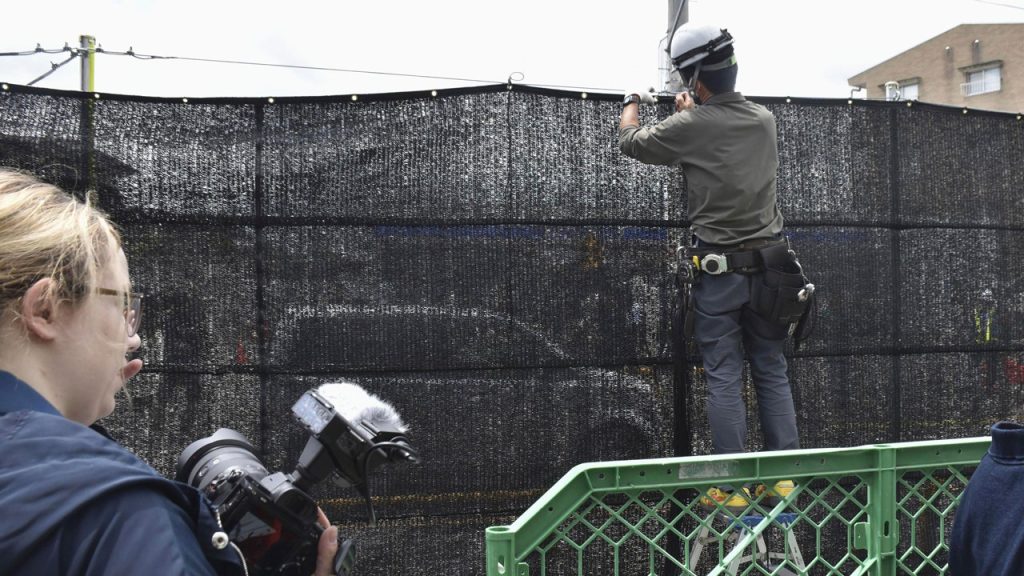The town of Fujikawaguchiko in Japan recently constructed a large black screen in front of a popular view of Mount Fuji to discourage tourists from overcrowding the area. Known as “Mt. Fuji Lawson,” this spot outside a convenience store offered a picturesque view of the iconic mountain. However, the influx of visitors, mostly foreigners, caused safety concerns as they would block the narrow sidewalk, take photos on the busy road, or enter neighbors’ properties in pursuit of the perfect shot. In response, officials erected an 8.2-foot-high black mesh net along the sidewalk to block the view and deter overcrowding.
In addition to the measures taken in Fujikawaguchiko, the Yamanashi prefecture, home to the most popular route to summit Mount Fuji, introduced a booking system ahead of the climbing season to address issues of overcrowding, littering, and safety risks on the mountain. Under the new plan, up to 4,000 climbers will be allowed to enter the Yoshida Trail per day for a hiking fee of around $18, with an option to donate an additional $9 for conservation efforts. To prevent “bullet climbing,” climbers must have reservations for an overnight stay at huts along the trail to hike beyond a certain point between 4 p.m. and 3 a.m., ensuring adequate rest and reducing risks to their safety.
Mount Fuji, designated a UNESCO World Cultural Heritage site in 2013, has transformed from a place of pilgrimage to a popular destination for hikers looking to witness the sunrise from its summit. However, concerns have arisen over the amount of trash left behind by visitors, including plastic bottles, food, and clothing items. Over-tourism has become a growing issue in Japan, with popular destinations like Kyoto and Kamakura also experiencing excess crowds. Last year, Japan welcomed over 25 million visitors, and projections for 2024 estimate that number could reach nearly 32 million, surpassing the record from 2019, according to the Japan National Tourism Organization.
While the construction of the black screen in Fujikawaguchiko may deter tourists from overcrowding one particular spot for photos of Mount Fuji, there are still other locations where visitors can capture the iconic view. The town’s efforts to manage overcrowding and ensure safety reflect a larger trend in Japan to address the challenges posed by tourism growth. By implementing a booking system for the Yoshida Trail and promoting conservation efforts through hiking fees and donations, the Yamanashi prefecture aims to strike a balance between providing access to Mount Fuji and preserving the natural environment.
In conclusion, Japan’s efforts to manage overcrowding and safety risks on Mount Fuji and other popular tourist destinations reflect the country’s commitment to sustainable tourism practices. The introduction of measures such as the black screen in Fujikawaguchiko and the booking system for the Yoshida Trail demonstrate a proactive approach to addressing challenges associated with over-tourism. By promoting conservation efforts, limiting access, and encouraging responsible behavior among visitors, Japan aims to balance the economic benefits of tourism with the protection of its cultural and natural heritage. As visitor numbers continue to rise, it will be essential for authorities to adapt and implement sustainable solutions to ensure that Japan’s iconic sites remain accessible and preserved for future generations to enjoy.













